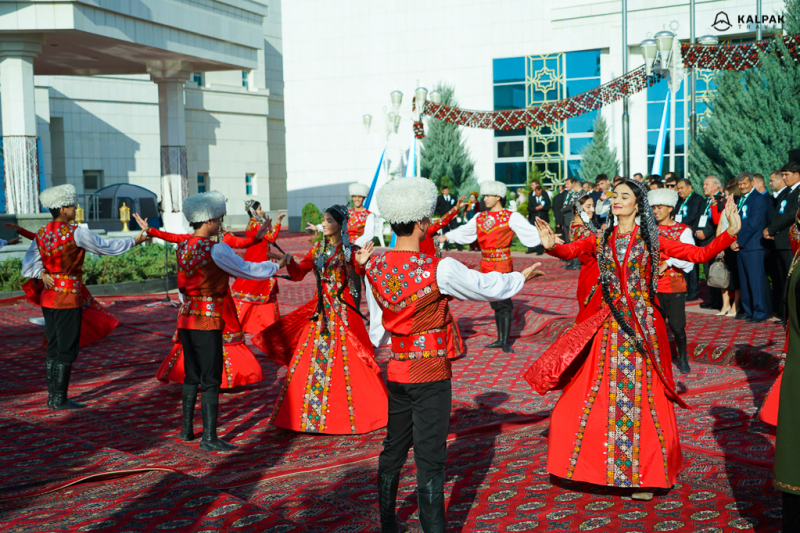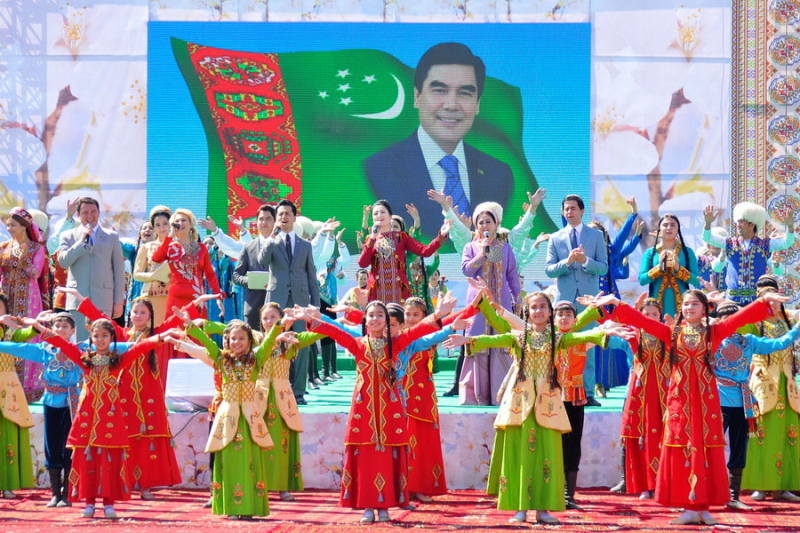Turkmen Dances
Local folk dances are nothing short of colorful displays of Turkmen art, with each movement executed with precision to convey a specific meaning. Turkmen dances have absorbed many traditions over the centuries and now demonstrate the distinctiveness of this tribal culture. Kushtdepdi is a well-known and ancient Turkmen folk dance, as evidenced by a fresco discovered in Old Nisa depicting a group of dancers with movements reminiscent of kushtdepdi. The dance begins with the flowing movements of a girl and a boy who are surrounded by other clapping dancers.
During the dance, quatrains known as gazala are performed, each ending with exclamations of "uh-hu," "hey-ha," and "kusht-kusht." The rhythm is set by the dancers in the center, who are then echoed by those around them. Kushtdepdi is usually concluded with a loud cry of "huv-hak," after which the dancers come to a halt and place their palms to their faces. Kushtdepdi is performed in traditional crimson and burgundy costumes. Historically, kushtdepdi was only performed by the Turkmen Yomut tribes who lived on the Caspian Sea coast, and it wasn't until the end of the twentieth century that it spread throughout the country. It is now on the UNESCO List of Intangible Cultural Heritage and is almost exclusively performed at cultural festivals in Ashgabat and other cities.









